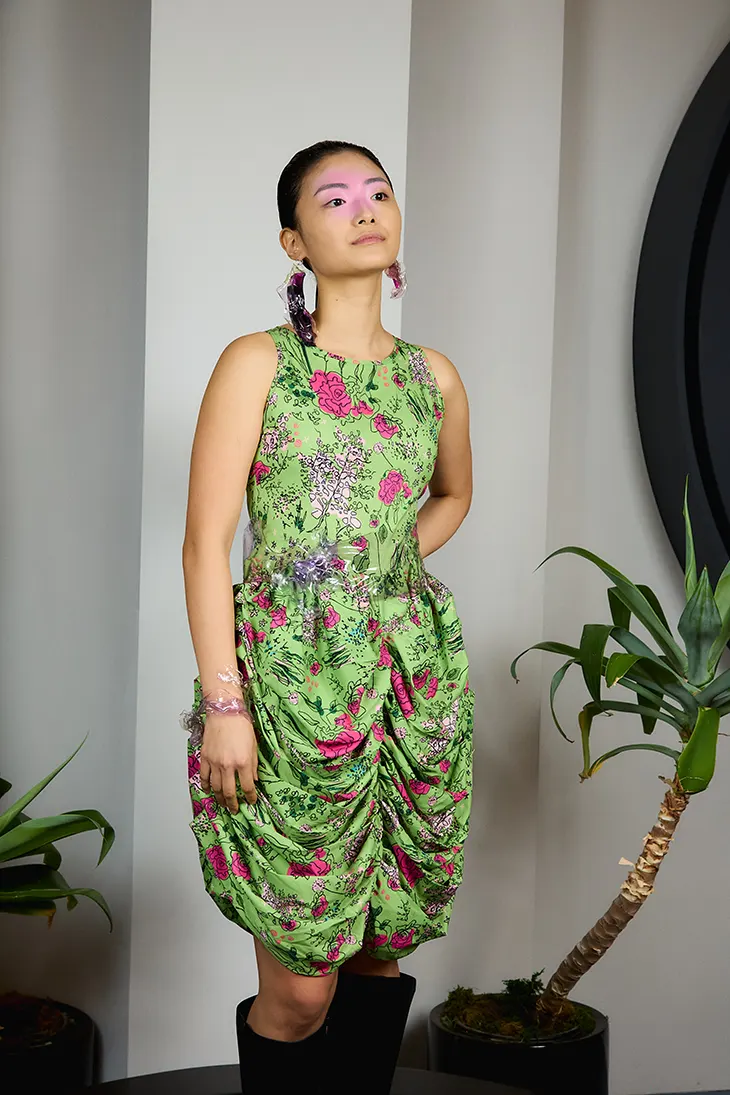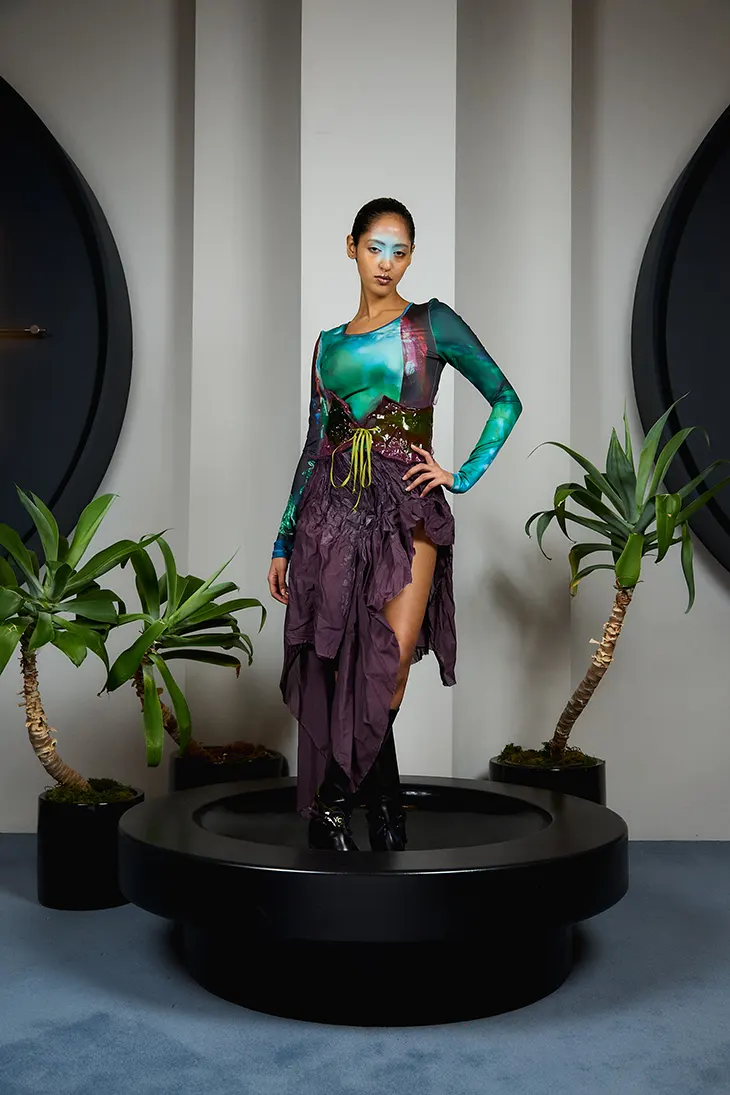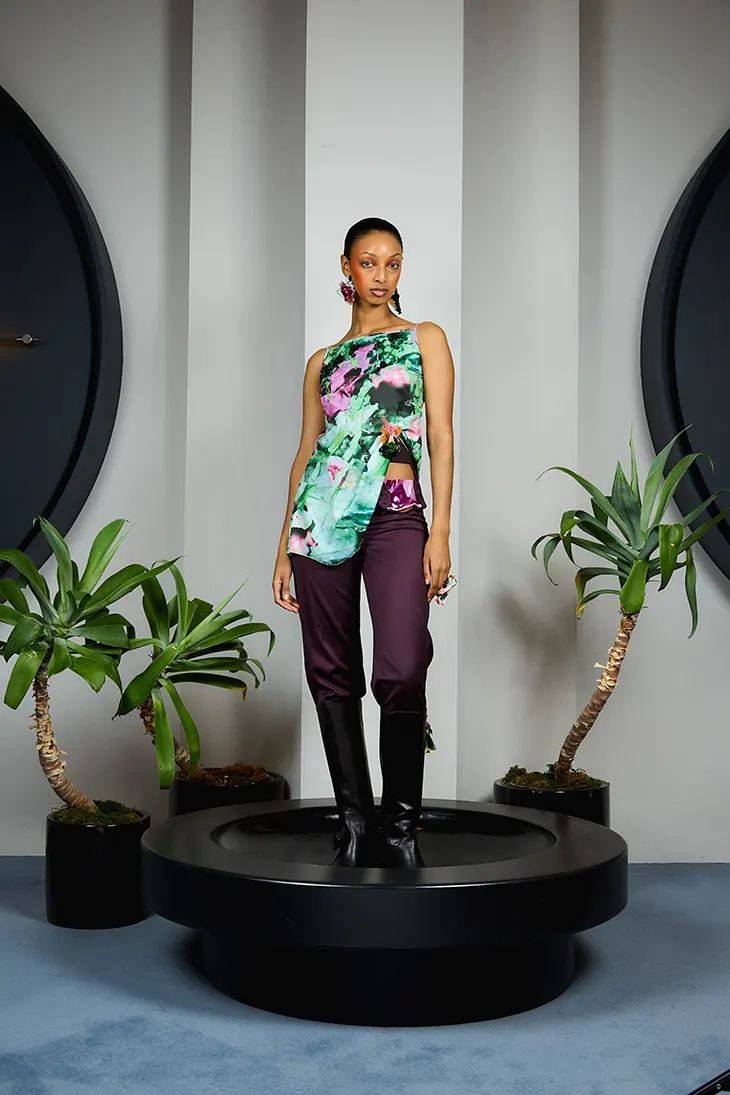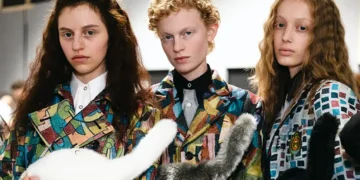
Caroline Zimbalist Fall Winter 2025 collection expands on her past explorations of biomaterials, pushing them beyond artistic experimentation into wearable forms. What once existed as sculptural alternatives to traditional textiles now takes on a more integrated role, existing between clothing and accessory. By molding bioplastic over conventional garments, she creates multi-dimensional pieces that challenge perceptions of materiality and design.
Fall Winter 2025.26 Womenswear
Zimbalist’s previous collections introduced bioplastic as a colorful and expressive medium, offering an alternative to conventional fabrics. FW25 builds upon that foundation, refining the balance between natural textiles and structured bioplastic elements. Her work explores how these materials interact, how prints shift across different surfaces, how texture alters perception, and how rigid structures coexist with fluidity.

Denim and jacquard enter the collection through jackets and pants, forming a contrast with her signature bio-tops. These pieces ground the sculptural elements, making them more adaptable to daily wear while retaining their conceptual strength. The collection’s layered approach emphasizes depth, with translucent and opaque bioplastics creating new dimensions over printed fabrics.
Zimbalist’s design philosophy leans into duality, the interplay of the familiar and the forward-thinking. Her prints, created on standard textiles, reflect an imaginative take on the natural world, a nod to the organic influences in her work. By layering colorful bioplastics over these textiles, she visualizes the relationship between tradition and the future, where one does not replace the other but instead reshapes it.

The sculptural elements act as both embellishment and structure, reframing bioplastics as more than a sustainable alternative. They become central to the narrative of her designs, moving beyond eco-consciousness into a space where innovation and aesthetics hold equal weight.
Rather than positioning bioplastics solely within the discourse of sustainability, Zimbalist presents them as a material with artistic and commercial viability. Her work challenges the assumption that these materials exist only as ethical alternatives, arguing instead for their place in high fashion. By refining their application and integrating them into tailored silhouettes, she shifts the focus from utility to desirability.
Her vision is clear, bioplastics should not just be acknowledged for their environmental benefits but also for their potential to redefine luxury and craftsmanship.




















